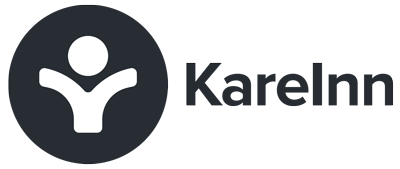The adoption and implementation of new technologies in health and social care settings are influenced by various factors such as relative advantage, compatibility, complexity, trialability, and observability. For instance, the odds of adoption are higher and quicker with technology that offers a clear advantage, is user-friendly, and can be tested before implementation. Conversely, a complex and difficult-to-use technology may be adopted slowly. The adoption of new technologies in healthcare is not always straightforward, as care providers may doubt its benefits. Additionally, new technologies may not be compatible with existing systems and practices, leading to implementation difficulties. Financial, organisational, and training constraints can also pose challenges.
Abraham S. Kebede is an early-stage researcher in the INNOVATEDIGNITY project funded by EU Horizon 2020 through the MSCA ITN at the University of Brighton. Starting in January 2023, he began an industrial placement with KareInn. Here, he explores some of the barriers and facilitators of care technology adoption with KareInn’s Managing Director, Kate Colborne-Baber.
Abraham: What are some of the challenges for care homes to initially adopt KareInn’s technology access to information on the existence of the technology, need and necessities, external factors including policy, staff shortage?
Kate: The biggest challenge is always financial. Whether that be the cost of the system and associated hardware or the investment in staff time to drive the change management programme, implement the system and ensure it is truly embedded.
Other factors include; the disparity in staff’s familiarity with technology, which will lead to replacing people with devices. The high turnover of social care staff, and the reliance on agency workers who may not be around once the system is in is also a barrier to change.
There are a number of obstacles when it comes to training; over 70% of staff in some care homes do not have English as their first language, for example. There is also a fear of CQC inspections, especially if the home has a good or outstanding rating. Our care home partners tell that us they fear an inspection taking place while a new system is being implemented, as they may be marked down, receiving a lower rating.
Fortunately, we’ve worked with many of our partners to overcome the above challenges, and they have successfully implemented our technology.
Abraham: What’s the selling point of KareInn and how do you make the system available to care providers?
Kate: We all know that the care industry needs more support to achieve better outcomes for the most vulnerable people in our society. Technology, specifically digitising care records, holds a pivotal role in allowing care homes to provide a more consistent level of care for their residents.
KareInn includes the most highly regarded social care software training on the market.We provide online training that helps support staff to feel confident and allows them to improve their skills. Our In-App Support allows care staff to easily find answers to their questions, report issues and raise queries. Our support team responds to each and every query so staff can feel confident they have the answers they need when they need them.
When it comes to training, our Training Centre has created an online library of short tutorials for quick refreshers and to help staff further develop their skills. This resource also provides essential training for new and agency staff who might not have attended our face-to-face training sessions.
Abraham: How quickly do users adapt to navigating the system?
Kate: Care staff are always amazed at how easy to use the system is. Over 95% of our care staff are comfortable creating records after just two hours of system training. We pride ourselves on giving users specific training which is most relevant to people’s roles. We back this up with an extensive support library of bite-size online reminder videos that staff can access whilst delivering care.
Our three hour manager and senior training also highlights that right from the go-live date, data is posted into the system, recording trends and highlighting pertinent information through our in-app dashboards.
Abraham: One of the strengths I observed was the availability of the knowledge centre, which will provide the resource to facilitate learning customisable to the individual need and pace. What is the feedback from frontline workers?
Kate: Feedback on the knowledge centre is very positive as it is a supportive library of bite-size online reminder videos that staff can access whilst delivering care. However, not everybody likes to learn through videos, so we also generate written articles for further support. As we track system usage, we can also run tutorials for clients who are struggling with particular topics.
New staff members or agency staff can have our online training as part of their induction, which quickly gets them up to speed and able to record their interactions directly in real time, rather than them needing a colleague at the end of a shift.
Abraham: How often do you follow-up, who is responsible for the trainings of new recruits?
Kate: At KareInn, we have found that the first six weeks post going live with the system are key. Staff need to be encouraged to start using the system straight away so that they can experience just how intuitive it is and how they can start to capture really meaningful interactions with residents throughout their day, with very little effort. Throughout the six weeks of intense support, KareInn’s Customer Success Team ensure that all staff members are making full use of the system, including using the quick tools to support daily living tasks, looking at the trended information to view patterns of behaviour, setting reminders for tasks to ensure important jobs are completed in a timely manner, reassessing care plans and assessments regularly, as well as utilising the home level reports and dashboards. Becoming truly familiar with the system and embedding a culture of embracing the opportunities available through switching to digital records takes time and effort from staff and leaders across the care home.
One top tip I would offer is to identify those individuals within the home who have embraced the technology with enthusiasm and make them your KareInn Champions. These individuals are often key to supporting others through this time of transition and can offer support and advice to new recruits as required.
Abraham: What are the measures in place to maximise the user experience? What are the challenges?
Kate: It’s all about embedding best practice. Our Account Managers provide regular check-ups and ongoing support, to ensure our customers reap the benefits of their partnership with KareInn.
From a platform point of view, we have further built on the launch of KareInn 3.0, the next generation in Digital Care Planning. Our latest platform builds on our original innovative foundation of intuitive design and technical capabilities but includes more powerful integrations and reporting.
From a digitised care management app, families can get day-to-day care insights on their loved ones, giving reassurances on the level of care that are being provided. Every interaction is digitally evidenced and safely recorded at the point-of-care, providing a full audit trail of individual residents – further instilling confidence in the care system. The process of managing care plan reviews and reports is also more efficient, as we’ve seen a 90-minute time saving for customers moving from paper to digital.
Abraham: How accessible is your customer support?
Kate: Our Knowledge Centre and In-App Support allows care staff to easily find answers to their questions, report issues and raise queries. The support facility is available 24/7.
Abraham: What are some of the features that the carers found useful?
Kate: In an emergency, being able to instantly access the necessary information at speed from any device, instead of running to the other side of the care home to find paper documentation could be the difference between life or death.
Employing digital solutions ensures secure records that are fully GDPR compliant. Using a digital solution gives care home managers the ability to monitor care delivery over time and adjust staffing levels to cope with additional demand in care. The evidence-based processes help guide CQC compliance by presenting a snapshot of the information, making a CQC visit less stressful. It also instils confidence for care home managers that good care home ratings can be maintained and quickly improved if a low rating is given.
Abraham: Apart from the return on investment (ROI), what are some of the value propositions that drive KareInn innovation and diffusion? What matters to you the most? Who benefits the most from this system?
Kate: We develop our software for the best care outcomes possible and give management complete transparency over day-to-day care. We leverage technology to help give residents the independence, choice and individuality they want; the care staff the freedom and time to care; and senior management the oversight to make the improvements that ensure higher occupancy rates and minimise risk.
Wherever you are on your digital transformation journey, we’d be happy to talk to you about how we can support you so please reach out to Kate Colborne-Baber on LinkedIn or email hello@kareinn.com




